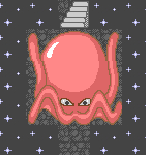<!doctype html>
<html>
<head>
<meta charset="utf-8">
<title>Untitled Document</title>
<style type="text/css">
<!--
body {
font: 100%/1.4 Verdana, Arial, Helvetica, sans-serif;
background-color: #42413C;
margin: 0;
padding: 0;
color: #000;
}
/* ~~ Element/tag selectors ~~ */
ul,
ol, dl { /* Due to variations between browsers, it's best practices to
zero padding and margin on lists. For consistency, you can either
specify the amounts you want here, or on the list items (LI, DT, DD)
they contain. Remember that what you do here will cascade to the .nav
list unless you write a more specific selector. */
padding: 0;
margin: 0;
}
h1, h2, h3, h4, h5, h6, p {
margin-top: 0; /* removing the top margin gets around an issue
where margins can escape from their containing block. The remaining
bottom margin will hold it away from any elements that follow. */
padding-right: 15px;
padding-left: 15px; /* adding the padding to the sides of the elements
within the blocks, instead of the block elements themselves, gets rid
of any box model math. A nested block with side padding can also be used
as an alternate method. */
}
a img { /* this selector removes the
default blue border displayed in some browsers around an image when it
is surrounded by a link */
border: none;
}
/* ~~ Styling
for your site's links must remain in this order - including the group of
selectors that create the hover effect. ~~ */
a:link {
color: #42413C;
text-decoration: underline; /* unless you style your links to look
extremely unique, it's best to provide underlines for quick visual
identification */
}
a:visited {
color: #6E6C64;
text-decoration: underline;
}
a:hover,
a:active, a:focus { /* this group of selectors will give a keyboard
navigator the same hover experience as the person using a mouse. */
text-decoration: none;
}
/* ~~ This fixed width container surrounds all other blocks ~~ */
.container {
width: 960px;
background-color: #FFFFFF;
margin: 0 auto; /* the auto value on the sides, coupled with the width, centers the layout */
}
/* ~~ The header is not given a width. It will extend the full width of your layout. ~~ */
header {
background-color: #ADB96E;
}
/* ~~ These are the columns for the layout. ~~
1)
Padding is only placed on the top and/or bottom of the block elements.
The elements within these blocks have padding on their sides. This saves
you from any "box model math". Keep in mind, if you add any side
padding or border to the block itself, it will be added to the width you
define to create the *total* width. You may also choose to remove the
padding on the element in the block element and place a second block
element within it with no width and the padding necessary for your
design.
2) No margin has been given to the columns since they are
all floated. If you must add margin, avoid placing it on the side
you're floating toward (for example: a right margin on a block set to
float right). Many times, padding can be used instead. For blocks where
this rule must be broken, you should add a "display:inline" declaration
to the block element's rule to tame a bug where some versions of
Internet Explorer double the margin.
3) Since classes can be used
multiple times in a document (and an element can also have multiple
classes applied), the columns have been assigned class names instead of
IDs. For example, two sidebar blocks could be stacked if necessary.
These can very easily be changed to IDs if that's your preference, as
long as you'll only be using them once per document.
4) If you
prefer your nav on the left instead of the right, simply float these
columns the opposite direction (all left instead of all right) and
they'll render in reverse order. There's no need to move the blocks
around in the HTML source.
*/
.sidebar1 {
float: right;
width: 180px;
background-color: #EADCAE;
padding-bottom: 10px;
}
.content {
padding: 10px 0;
width: 780px;
float: right;
}
/* ~~ This grouped selector gives the lists in the .content area space ~~ */
.content ul, .content ol {
padding: 0 15px 15px 40px; /* this padding mirrors the right padding
in the headings and paragraph rule above. Padding was placed on the
bottom for space between other elements on the lists and on the left to
create the indention. These may be adjusted as you wish. */
}
/* ~~ The navigation list styles (can be removed if you choose to use a premade flyout menu like Spry) ~~ */
nav ul{
list-style: none; /* this removes the list marker */
border-top: 1px solid #666; /* this creates the top border for the
links - all others are placed using a bottom border on the LI */
margin-bottom: 15px; /* this creates the space between the navigation on the content below */
}
nav li {
border-bottom: 1px solid #666; /* this creates the button separation */
}
nav
a, nav a:visited { /* grouping these selectors makes sure that your
links retain their button look even after being visited */
padding: 5px 5px 5px 15px;
display: block; /* this gives the link block properties causing it to
fill the whole LI containing it. This causes the entire area to react to
a mouse click. */
width: 160px; /*this width makes the entire
button clickable for IE6. If you don't need to support IE6, it can be
removed. Calculate the proper width by subtracting the padding on this
link from the width of your sidebar container. */
text-decoration: none;
background-color: #C6D580;
}
nav a:hover, nav a:active, nav a:focus { /* this changes the background and text color for both mouse and keyboard navigators */
background-color: #ADB96E;
color: #FFF;
}
/* ~~ The footer ~~ */
footer {
padding: 10px 0;
background-color: #CCC49F;
position: relative;/* this gives IE6 hasLayout to properly clear */
clear: both; /* this clear property forces the .container to understand where the columns end and contain them */
}
/*HTML 5 support - Sets new HTML 5 tags to display:block so browsers know how to render the tags properly. */
header, section, footer, aside, article, figure {
display: block;
}
-->
</style><!--[if lt IE 9]>
<script src="
http://html5shiv.googlecode.com/svn/trunk/html5.js"></script>
<![endif]--></head>
<body>
<div class="container">
<header>
<a href="#"><img src="" alt="Insert Logo Here" width="180"
height="90" id="Insert_logo" style="background-color: #C6D580;
display:block;" /></a>
</header>
<div class="sidebar1">
<nav>
<ul>
<li><a href="#">Link one</a></li>
<li><a href="#">Link two</a></li>
<li><a href="#">Link three</a></li>
<li><a href="#">Link four</a></li>
</ul>
</nav>
<aside>
<p> The above links demonstrate a basic navigational structure
using an unordered list styled with CSS. Use this as a starting point
and modify the properties to produce your own unique look. If you
require flyout menus, create your own using a Spry menu, a menu widget
from Adobe's Exchange or a variety of other javascript or CSS
solutions.</p>
<p>If you would like the navigation
along the top, simply move the ul to the top of the page and recreate
the styling.</p>
</aside>
<!-- end .sidebar1 --></div>
<article class="content">
<h1>For PHP</h1>
<section>
<h2>Using strlen</h2>
<p>
<?php
$strs = array();
$strs[0] = "simple";
$strs[1] = "¿español?";
$strs[2] = "estómago; ¡díficil!";
$strs[3] = "这是一段测试内容。";
$strs[4] = "这是另1段测试内容";
$strs[5] = "台湾正,体中文";
$strs[6] = "文";
$strs[7] = ",";
$strs[8] = "ñ";
$strs[9] = "¿";
$strs[10] = "?";
foreach ($strs as $str) {
$n = strlen($str);
if ($n == 1) {
echo "String '$str' has <b>1</b> character.<br>";
} else {
echo "String '$str' has <b>$n</b> characters.<br>";
}
}
?></p>
<h2>Using mb_strlen</h2>
<p>
<?php
foreach ($strs as $str) {
$n = mb_strlen($str);
if ($n == 1) {
echo "String '$str' has <i>actually</i> <b>1</b> character.<br>";
} else {
echo "String '$str' has <i>actually</i> <b>$n</b> characters.<br>";
}
}
?></p>
</section>
<h1>For JavaScript</h1>
<section>
<p>
<script>
var strs = [];
strs[0] = "simple";
strs[1] = "¿español?";
strs[2] = "estómago; ¡díficil!";
strs[3] = "这是一段测试内容。";
strs[4] = "这是另1段测试内容";
strs[5] = "台湾正,体中文";
strs[6] = "文";
strs[7] = ",";
strs[8] = "ñ";
strs[9] = "¿";
strs[10] = "?";
for (var i = 0; i < strs.length; i++) {
var n = strs[i].length;
if (n == 1) {
document.write("String '" + strs[i] + "' has <b>1</b> character.<br>");
} else {
document.write("String '" + strs[i] + "' has <b>" + n + "</b> characters.<br>");
}
}
</script>
</p>
</section>
<!-- end .content --></article>
<footer>
<p>This footer contains the declaration position:relative; to
give Internet Explorer 6 hasLayout for the footer and cause it to clear
correctly. If you're not required to support IE6, you may remove
it.</p>
<address>
Address Content
</address>
</footer>
<!-- end .container --></div>
</body>
</html>





